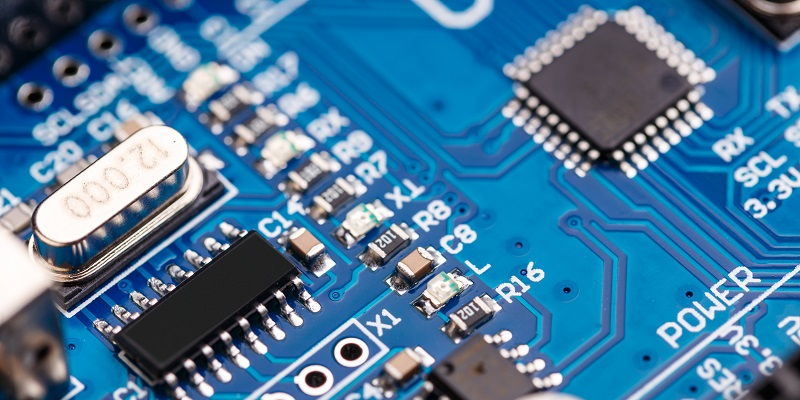In an exciting development in the tech industry, renowned chip designer ARM has announced a collaboration with Intel to optimize its processor IP using Intel’s advanced 18A process. This partnership aims to leverage the strengths of both companies and deliver enhanced performance, cost efficiency, and reduced risk in chip development. The incorporation of Intel’s groundbreaking 18A process into ARM’s chip design is expected to have far-reaching implications for various industries, especially in the field of High-Performance Computing (HPC) with the rapid rise of GenAI development.
Collaboration between ARM and Intel
The collaboration between ARM and Intel signifies a strategic alliance between two industry leaders, with each company bringing its unique expertise to the table. ARM, known for its power-efficient and scalable microprocessor designs, aims to benefit from Intel’s manufacturing prowess and cutting-edge technological advancements. Intel, on the other hand, recognizes the value of collaborating with ARM to tap into the growing demand for ARM-based chips across various sectors.
Optimization of ARM processor IP with Intel’s 18A process
The primary objective of this collaboration is to optimize ARM’s processor intellectual property (IP) using Intel’s advanced 18A process. By incorporating Intel’s state-of-the-art RibbonFET transistors and introducing the innovative “PowerVia” delivery method, ARM chips are expected to experience significant performance improvements. This optimization process is crucial for both companies as they strive to stay ahead in the competitive semiconductor market.
A “hybrid” approach for better cost efficiency and reduced risk
One of the defining aspects of this collaboration is the adoption of a “hybrid” approach, wherein both ARM and Intel intend to balance risk and cost factors effectively. By working together, the companies aim to minimize the inherent challenges associated with introducing new manufacturing processes. This approach allows them to navigate potential hurdles while ensuring a smoother transition to Intel’s 18A process, ultimately leading to improved cost efficiency and increased competitiveness.
Initial implementation and plans for increased shipping volumes
While the initial implementation of ARM’s processor IP optimized with Intel’s 18A process may not be highly competitive, both companies have plans to gradually ramp up shipping volumes. This strategy enables them to refine the manufacturing processes, address any issues, and enhance the performance and reliability of the optimized chips. As the partnership progresses and the technology matures, ARM and Intel anticipate their offerings to become more compelling and competitive in the market.
Interest from the HPC industry due to GenAI development
The collaboration between ARM and Intel is expected to generate significant interest from the HPC industry, primarily driven by the exponential growth of GenAI development. As machine learning, artificial intelligence, and data analytics continue to gain prevalence in various sectors, the demand for energy-efficient processors capable of handling massive workloads is skyrocketing. The optimized ARM chips, leveraging Intel’s 18A process, are likely to carve out a prominent position in this market, attracting attention from HPC manufacturers, researchers, and developers.
Intel’s 18A process and anticipated performance improvements
Intel’s 18A process, which incorporates RibbonFET transistors and the advanced “PowerVia” delivery method, promises substantial performance improvements. The implementation of RibbonFET transistors allows for better control of electron flow, resulting in enhanced speed and power efficiency. Additionally, the “PowerVia” delivery method enables more efficient power distribution across the chip, contributing to overall performance improvements. It is estimated that the utilization of Intel’s 18A process will yield a promising generation-to-generation improvement of approximately 10%, providing users with faster and more efficient computing experiences.
The introduction of Intel’s 18A process into ARM’s chip development has the potential to significantly affect the competitive positioning of companies in the industry. As ARM chips optimized with Intel’s advanced manufacturing process enter the market, they can enable ARM-based devices to rival the performance of traditional x86 architectures. This development may disrupt the status quo and stimulate increased competition between companies vying for market dominance, prompting them to invest further in research, development, and innovation.
Expected timeline for incorporation of Intel’s 18A process into ARM chips
Barring any unforeseen delays, ARM aims to incorporate Intel’s 18A process into its chip designs as early as next year. The collaboration is already underway, with both companies working diligently to ensure a seamless integration of ARM’s processor IP with Intel’s optimized manufacturing process. This timeline demonstrates the swift pace at which ARM and Intel intend to bring the enhanced chips to market, reflecting their commitment to meeting the evolving needs of industries and consumers alike.
Anticipated use in Intel’s Lunar Lake CPUs in 2025
Intel’s 18A process holds immense potential beyond its collaboration with ARM. The advanced manufacturing process is projected to be utilized in Intel’s next-generation Lunar Lake CPUs, slated for release in 2025. This integration signifies the significance of Intel’s 18A process in the company’s product roadmap and highlights its commitment to delivering cutting-edge technology to consumers and businesses.
Positive outlook for Intel’s future and its foundry division
The collaboration with ARM and the anticipated adoption of Intel’s 18A process in various chip designs solidify the positive outlook for Intel and its foundry division. By extending its manufacturing capabilities to other companies, Intel can position itself as a strong player in the foundry market and potentially compete with other leading semiconductor manufacturers. Furthermore, this partnership allows Intel to diversify its revenue streams and leverage its expertise in manufacturing, while ensuring it remains at the forefront of technological advancements.
In conclusion, the collaboration between ARM and Intel to optimize ARM’s processor IP using Intel’s 18A process marks a significant milestone in the semiconductor industry. This strategic alliance has the potential to revolutionize chip development, enabling ARM to leverage Intel’s advanced manufacturing technology for enhanced performance and cost-efficiency. As ARM chips optimized with Intel’s 18A process become a reality, industries like HPC and GenAI development are likely to benefit greatly from the improved computing capabilities. With a positive outlook for Intel’s future and a strong commitment to innovation, this collaboration paves the way for groundbreaking advancements in chip design and manufacturing.

